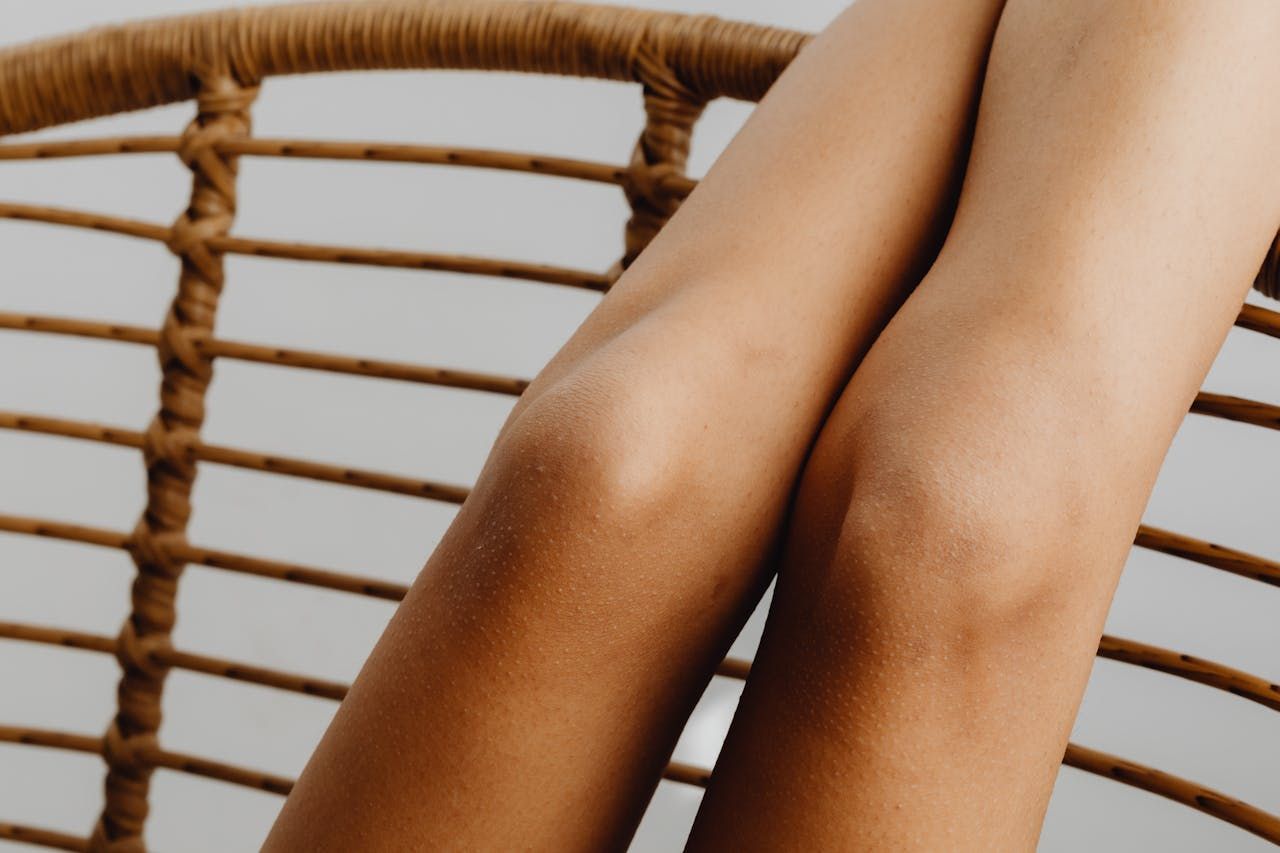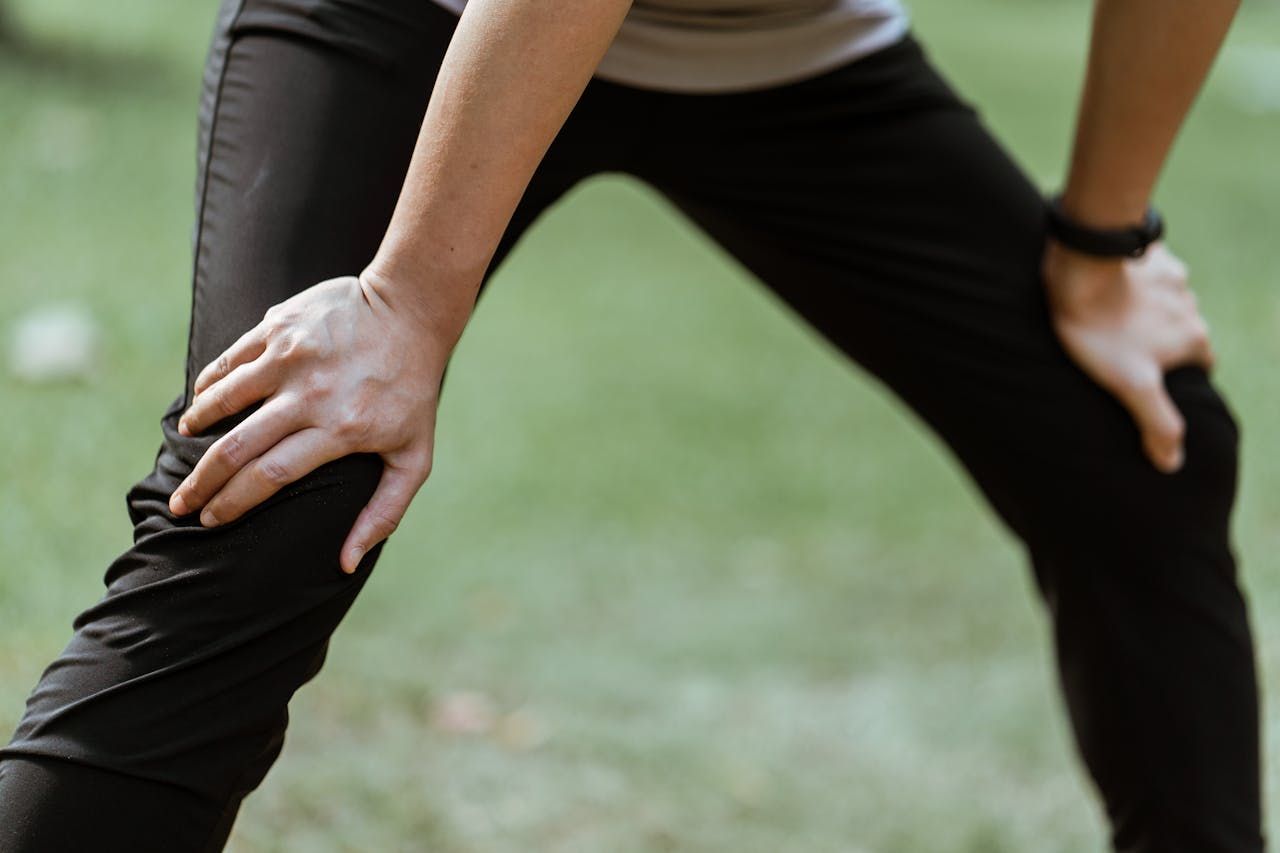How To Sleep With Knee Pain

Knee pain is never welcome, but it’s particularly irritating when you’re trying to get some sleep!
Aches and pains can significantly disrupt your sleep, leading to discomfort and fatigue. Interrupted sleep can even lead to slower healing, creating a troubling cycle.
Understanding how to sleep with knee pain is crucial for managing symptoms and improving rest. This guide provides practical strategies to alleviate knee pain while sleeping.
Let’s get right into it!
How To Sleep Better With Knee Pain
Facing knee pain when sleeping? Here are some at-home changes you can experiment with.
1. Choose the Right Sleeping Position
Selecting an appropriate sleeping position can alleviate knee pain, as a proper position takes extra strain off the affected knee.
Back Sleeping - Sleeping on your back with a pillow under your knees helps maintain proper alignment and reduces strain on the knee joint.- Side Sleeping - Alternatively, if you prefer side sleeping, you can try sleeping on your side with a pillow between your knees that can prevent the knees from touching, reducing pressure and discomfort.
The Groove X Lower Back Pain Relief Pillow is designed to go between your legs, helping you stay in the best sleeping position for knee pain without excess pressure all night long.
2. Mattress and Bedding
A supportive mattress is essential for managing knee pain, whether you’re experiencing inner knee pain when sleeping on side or kneecap pain on your back.
For the best sleep, opt for a medium-firm mattress that supports spinal alignment.
Additionally, use soft, breathable bedding to ensure comfort and prevent overheating, as higher temperatures are linked to poorer sleep (Chevance et al., 2024).
3. Get a Great Knee Pillow
Using knee pillows or knee pads for sleeping can provide significant relief.
These pillows help maintain proper alignment of the knees and hips, reducing strain on the knee joint through materials like memory foam.
Look for pillows designed specifically for knee support to ensure maximum benefit. The Groove X Lower Back Pain Relief Pillow was designed to sit between your knees, and even comes with adjustable straps to ensure comfort from bedtime to your morning alarm.
4. Apply Heat or Cold Therapy
Applying heat or cold to the knee before bedtime can alleviate pain.
Heat therapy (e.g., a hot water bottle) relaxes muscles and improves blood flow, while cold therapy (e.g., ice packs) reduces inflammation and numbs pain.
5. Gentle Pre-Sleep Stretching
Gentle stretching exercises before bed can reduce muscle tension and improve flexibility, and can even lead to less knee pain while you snooze.
However, don’t do any old yoga routine. Focus on stretches that target the quadriceps, hamstrings, and calves to alleviate pressure on the knee joint.
6. Adopting Exercise Routine of Mobility and Resistance Training
Regular exercise strengthens the muscles around the knee, providing better support and reducing pain.
So, it’s good to incorporate mobility exercises to improve joint flexibility and resistance training to build muscle strength. A physiotherapist can help you find a tailored routine.

7. Identify and Address Underlying Causes
Persistent knee pain isn’t always due to an injury. It may be a symptom of underlying conditions such as arthritis, bursitis, or tendonitis.
It’s best to get checked out to be sure. So, contact a healthcare provider to diagnose and treat the root cause of your knee pain. Early intervention can prevent further complications and worse inner knee pain when sleeping in the future.
Best Sleeping Position For Knee Pain
The optimal sleeping position for knee pain varies depending on individual comfort and the nature of the pain. It’s a frustrating answer, we know, but it’s always best to tailor your sleeping position to your body’s needs.
For many, sleeping on the back with a pillow under the knees helps maintain proper alignment and reduces pressure on the knee joint.
Others find relief by sleeping on their side with a pillow between their knees, which prevents them from touching and reduces strain.
The best rule of thumb is to avoid anything that causes more pain. For instance, if you experience knee pain after sleeping with your legs bent, make sure you straighten your legs as much as possible in the future.
Chronic knee or hip pain can be debilitating. Learn about Natalie’s experience and how she overcame the struggle here.

FAQs
Why Do I Have Knee Pain After Sleeping With My Legs Bent?
Sleeping with legs bent can increase pressure on the knee joint, leading to discomfort. This position may also exacerbate underlying conditions like arthritis or bursitis.
Why Do I Get Sudden Intense Knee Pain While Sleeping?
Sudden intense knee pain during sleep may result from conditions such as gout, meniscus tears, nerve irritation, or other underlying problems.
When pain worsens or doesn’t go within two weeks, it’s always recommended to contact a healthcare provider.
What Is The Best Sleeping Position For Knee Pain?
The best sleeping position for knee pain varies, but generally, sleeping on your back with a pillow under your knees or on your side with a pillow between your knees can help alleviate discomfort.
How To Elevate Knee While Sleeping?
To elevate the knee while sleeping, place a pillow or wedge under the knee to raise it above the level of the heart. This position can reduce swelling and improve blood circulation, and is best done with a specialised knee pillow.
However, note that when muscle pressure is high, raising the limb above the heart further cuts off blood flow and worsens muscle and nerve function (Zhang, Styf and Lindberg, 2001). If you’re unsure, contact your doctor.
Why Do I Get Inner Knee Pain While Sleeping?
Inner knee pain during sleep may be associated with conditions like osteoarthritis or ligament issues. It can also be brought on by improper sleeping positions. The latter can be corrected by a healthy sleep posture or a memory foam pillow.
Last Thoughts
If you're seeking relief from knee pain during sleep, the range of Groove pillows designed for optimal support and alignment can help.
They’re expertly engineered to reduce knee pressure, improve sleep posture, add comfort, and help you wake up feeling refreshed!
References
- Chevance, G., Minor, K., Vielma, C., Campi, E., O’Callaghan-Gordo, C., Basagaña, X., Ballester, J. and Bernard, P. (2024). A systematic review of ambient heat and sleep in a warming climate. Sleep Medicine Reviews, [online] 75, p.101915. doi:https://doi.org/10.1016/j.smrv.2024.101915.
- Zhang, Q., Styf, J. and Lindberg, L.-G. (2001). Effects of limb elevation and increased intramuscular pressure on human tibialis anterior muscle blood flow. European Journal of Applied Physiology, 85(6), pp.567–571. doi:https://doi.org/10.1007/s004210100496.

